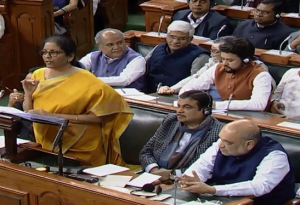India’s $428 billion union budget for the 2020-21 fiscal year was revealed over the weekend by Nirmala Sitharaman, the Indian finance minister. The new budget focuses on the government’s widening fiscal deficit and income tax collection. One of the major shortfalls in the announced budget appears to be with regard to defense spending, which increased by a mere five percent year-on-year, barely keeping up with inflation, which has run between five and six percent in India in recent years.
The budget suggests an India that is increasingly internally oriented, channeling the government’s fiscal energies toward longstanding domestic policy priorities, including education, welfare, and infrastructure. But the disappointing increase in defense spending underscores that the country’s capital spending will continue to fall short of its ambitions.
As several analysts have noted over the years, one of the core issues facing India’s defense budgeting is ballooning personnel costs—particularly pensions. One figure that highlights this is the fact that pensions for retired Indian military personnel now compose a greater spending sum than salaries for active duty personnel. The Modi government has wrangled with the pension issue since its initial term back in 2014, contending with longstanding reform demands, including calls for reform from Indian veterans.
As one Indian official put it to the Indian Express, “57 percent of the allocation for the ministry [of defense] goes towards salaries and pensions — defense pensions alone are 4.4 percent of total CGE (central government expenditure).” The official continued that “one-third of the central government’s capital expenditure goes towards ministry’s capital expenditure. This is the double-bind to which there is no easy answer.”
The official is partly right, that there is no easy answer to inverting the expenditure ratio on salaries/pensions and capital expenditure on defense. What is missing, however, is recognition that for India to have the kind of latitude it needs on defense spending, it needs to first right its economy. As India appears to succumb to a slowdown, the prescription should be putting growth first. Other more “creative ways,” as commentator Ajai Shukla puts it, can serve as short-term fixes, but New Delhi should prioritize long-term thinking about sustainably advancing its defense ambitions.
All else being the same, a faster-growing Indian economy, with a growing tax base, can finally allow defense capital expenditures to grow and keep up with India’s strategic ambitions. Until that happens, New Delhi will be unable to walk the talk on its security ambitions in the Indo-Pacific.

































